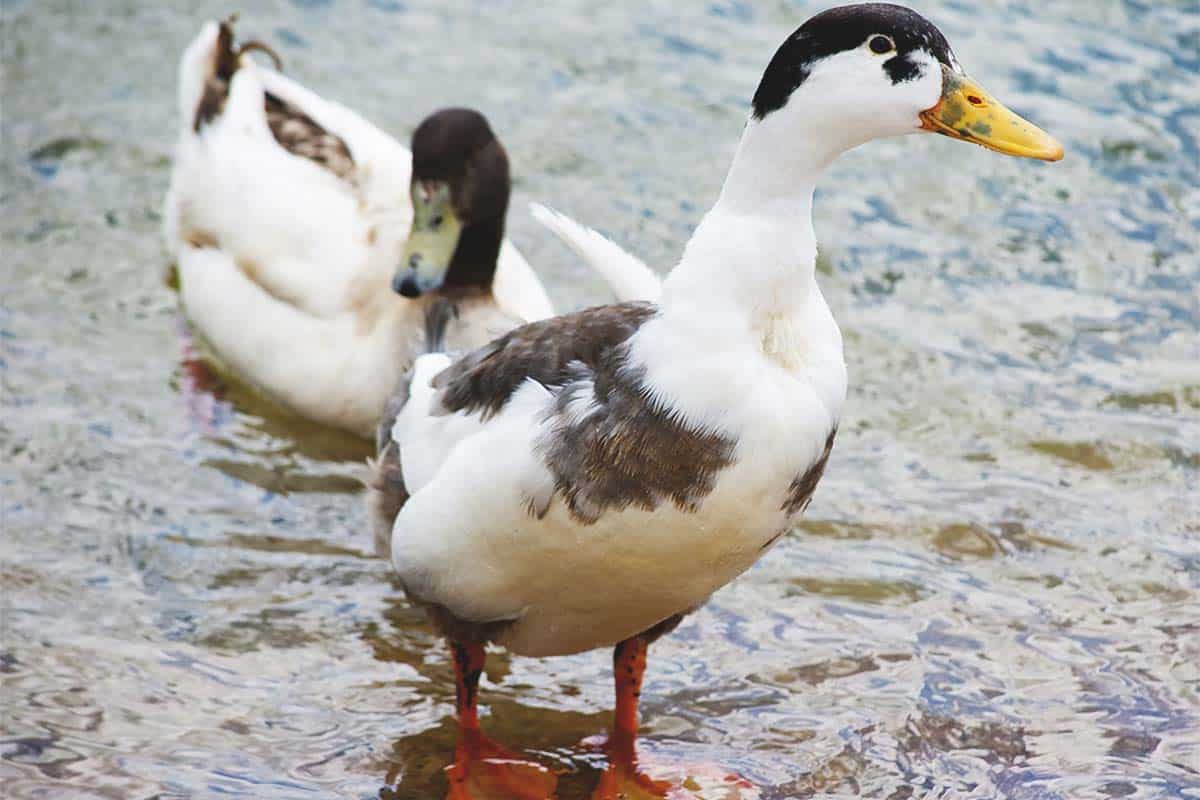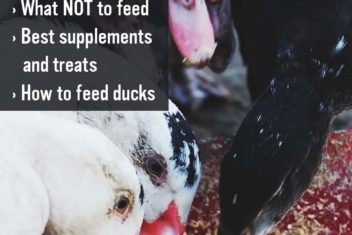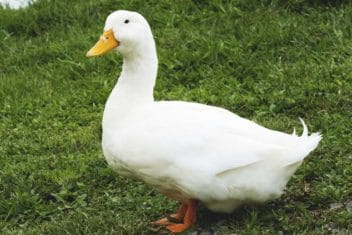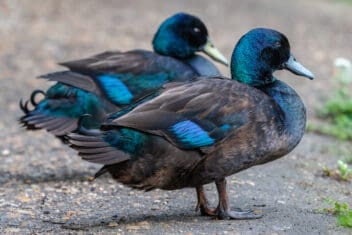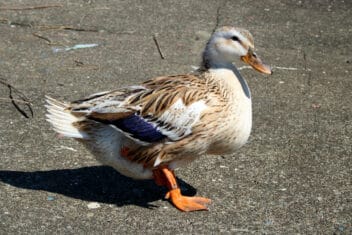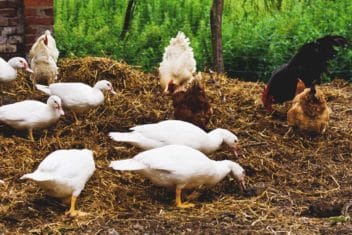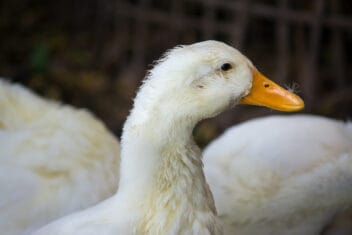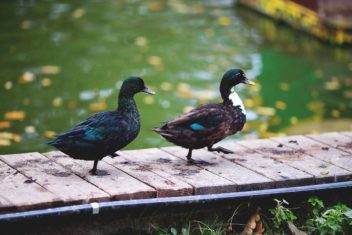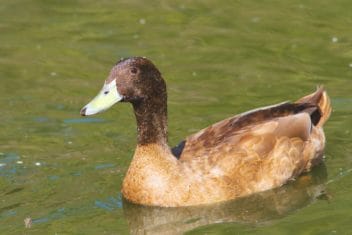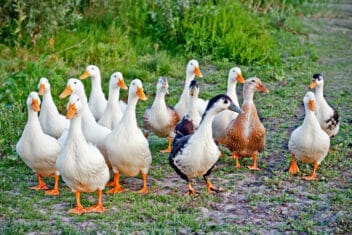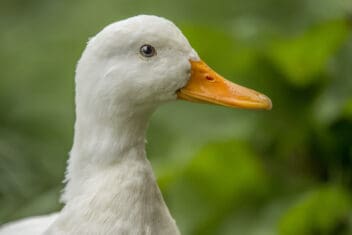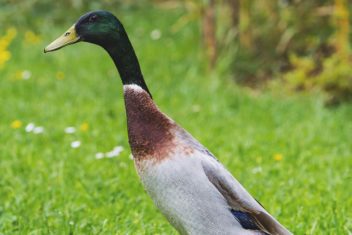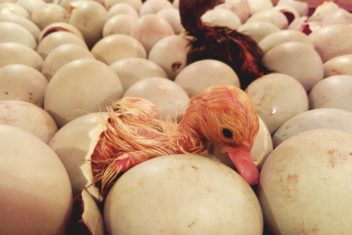Although Magpie Ducks aren’t as well known as Khaki Campbell or Runner Ducks, they are one of my must-have breeds for the homestead.
Magpies are excellent producers of meat and eggs, as well as being an especially adorable duck to have around.
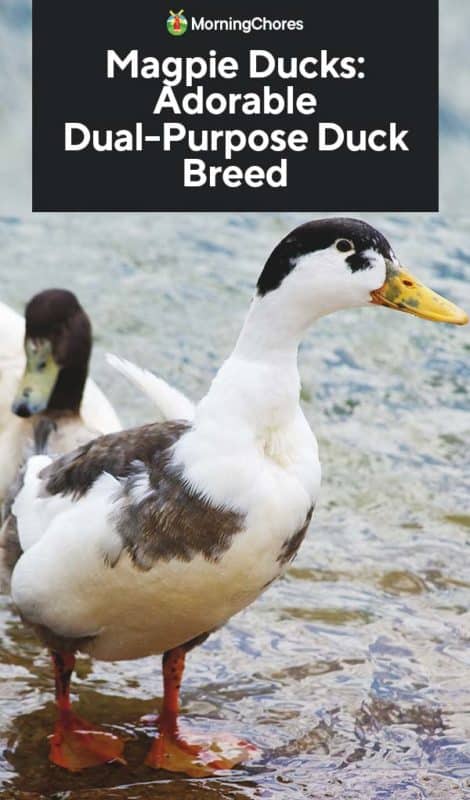
About Magpie Ducks
This sweet little breed originates from Yorkshire and was bred to perfection by Oliver Drake and M.C. Gower Williams. Magpies were bred at some point after the first world war, possibly from Indian Runner ducks, but no one is completely sure of their exact ancestry.
The first documentation of Magpies occurred in 1920, with a breeding club being formed in 1926.
In 1963, a man from Michigan named Isaac Hunter imported this breed to the United States. Upon importation, hobby breeders worked on perfecting the breed to be recognized by the American Poultry Association, which happened in 1977.
After Black Magpies were recognized by the American Poultry Association, Blue Magpies followed shortly thereafter.
Magpie Duck Characteristics
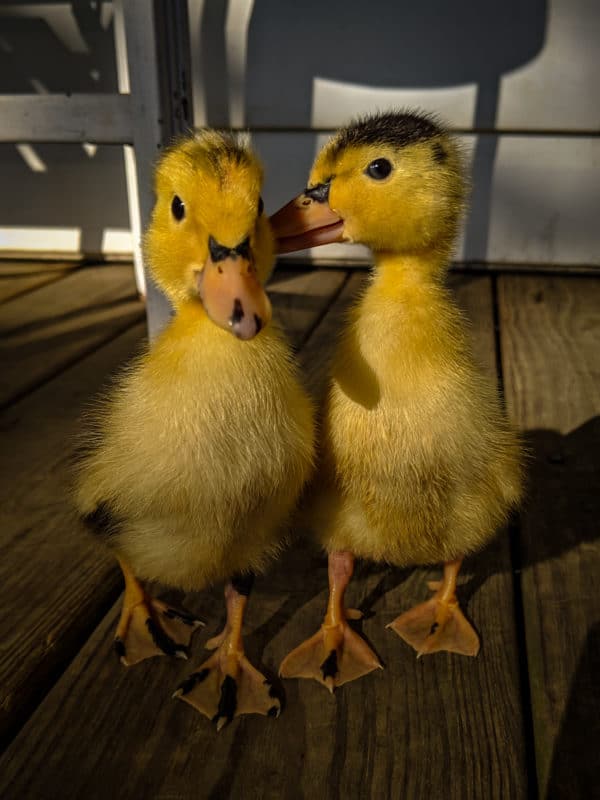
1. Size and Weight
Despite being known as a bird that is suitable for meat production, Magpies aren’t the heftiest ducks around. According to the American Standard for the breed, Magpie males should weigh around five pounds with females weighing around four pounds. Although this is the breed’s standard, there are larger Magpies around, they just aren’t peak show-quality ducks.
2. Temperament
Like any ducks, Magpie ducklings have the ability to imprint very strongly on their human caretakers if they don’t have many duckling siblings or parent ducks. How ducklings are raised can have a significant impact on their temperament as adults.
Most Magpies are described as fairly calm and docile birds with easygoing temperaments. Despite their calm demeanors, these ducks can sometimes be a bit jumpy and high strung. When Magpies are startled, they can take flight, but only for short distances because these ducks weren’t bred for flying.
3. Egg Production
Magpies are an outstanding breed for egg production, outperforming many chicken breeds out there with their production. If you’re considering the best duck breeds for egg production, Magpies should make it onto your list. In a calendar year, a single Magpie hen can lay between 220 and 290 large, white eggs.
4. Meat Production
While this isn’t a breed you can count on for the largest yield in terms of meat production, you can expect good quality meat from Magpies. A single carcass can comfortably feed between two and three adults. Magpie meat has been praised as gourmet quality and easy to cleanly pick from the carcass.
Taking Care of Magpies
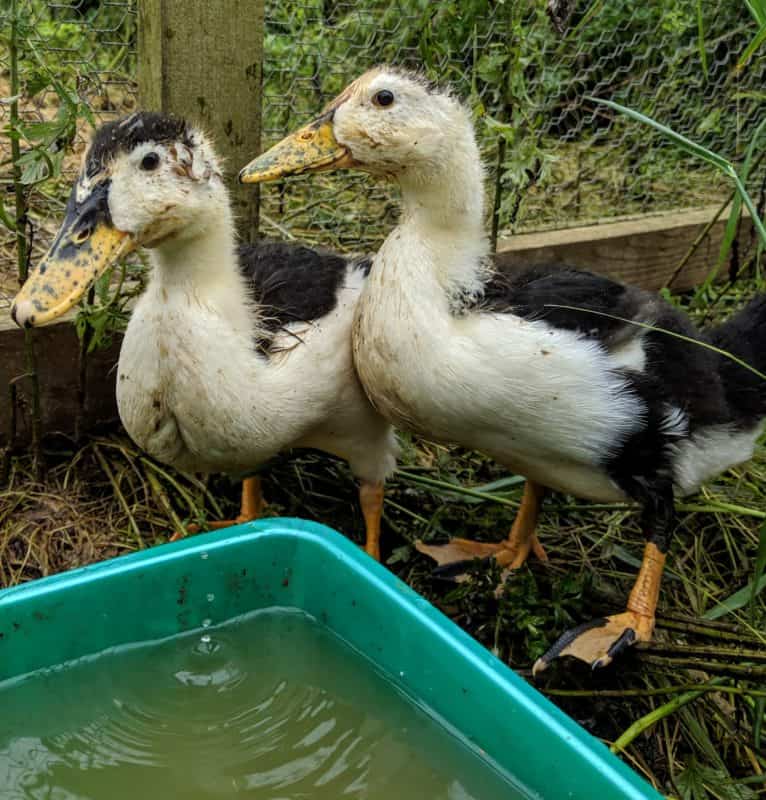
1. Feeding and Nutrition
If you’re raising Magpies from ducklings, you’ll want to be sure to start them out with the right food. Waterfowl starter crumbles or flock raiser crumbles are the ideal feed for new ducklings, but not every feed store carries this feed. The main difference between waterfowl starter and chick starter is the levels of Niacin or B3 in the feed.
Growing ducklings require higher levels of Niacin than chicks, otherwise, they will grow up with severe vitamin deficiencies. It is possible to feed ducklings chick starter, but never ever feed them medicated chick starter.
When feeding chick starter to ducklings, mix in brewer’s yeast at a ratio of 1 tablespoon to a cup of feed. It’s important to always keep brewer’s yeast on hand when raising ducklings just in case a duckling becomes deficient.
Grown ducks do best on flock raiser pellets, which will meet all their nutritional needs for health and egg production. If you are raising your ducks with chickens, ducks perform just fine on laying feed meant for chickens.
Always feed your ducks near their water because ducks can easily choke if they are unable to eat and drink at the same time.
2. Housing and Fencing
Duck houses need to be near the ground because ducks can have a hard time navigating ramps for raised coops. Your duck coop does not need to have roosts or nesting boxes because ducks prefer to do all their business on the ground.
Inside the coop, 5-6 square feet per duck is needed for your little ducky friends. For the run, provide with 12-15 square feet per duck. These amounts are the minimums, animals will always welcome the opportunity for more space.
3. Health and Care
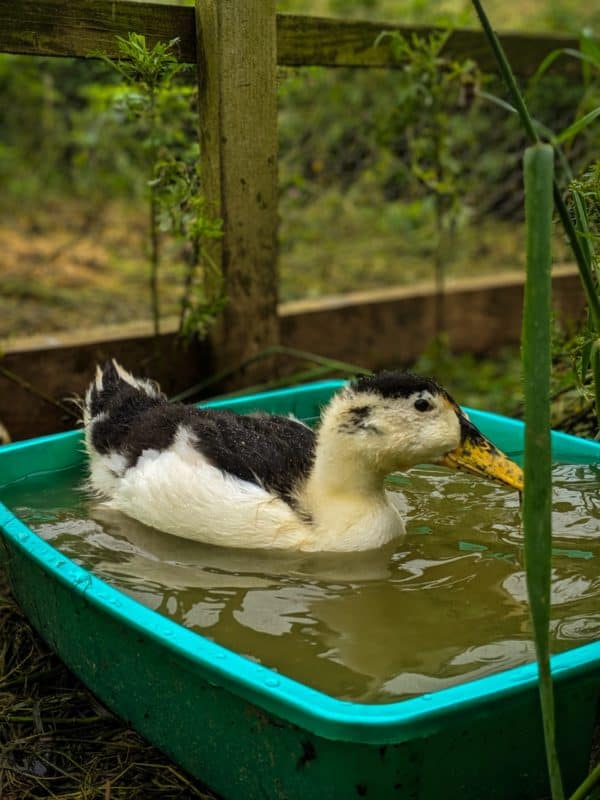
Magpies are a robust and hardy duck as long as they are given the proper living conditions that every duck needs to thrive. Make sure that your duck coop is cleaned regularly because the extra mess that ducks cause can be detrimental to their health if it isn’t managed.
Ducks always need at least a kiddie pool to splash around in to keep their bodies functioning well, ponds and springs are always welcomed by your webbed footed friends.
Managing a flock well and meeting their daily needs will go a long way in making sure your flock remains healthy and vigorous. Always keep a close eye on your flock to make sure you spot anything amiss before it gets out of hand.
4. Breeding
Magpies are a fun duck to breed, because who wouldn’t want more of these adorable fuzzy babies running around?
When selecting your breeding stock, always select only the best birds for many healthy generations to come. Selecting birds with vigor and strength as well as overall looks will give you the best chances at hatching high-quality ducklings.
Breed Alternatives
1. Indian Runners
Since it is speculated that Magpies are descendants of Indian Runners, this breed naturally makes a good alternative to Magpies. Indian Runner ducks are well known for outstanding egg production, producing between 300 and 350 eggs in a year. Magpies and Indian Runner ducks have similar stances as well as temperaments.
Did You Know?
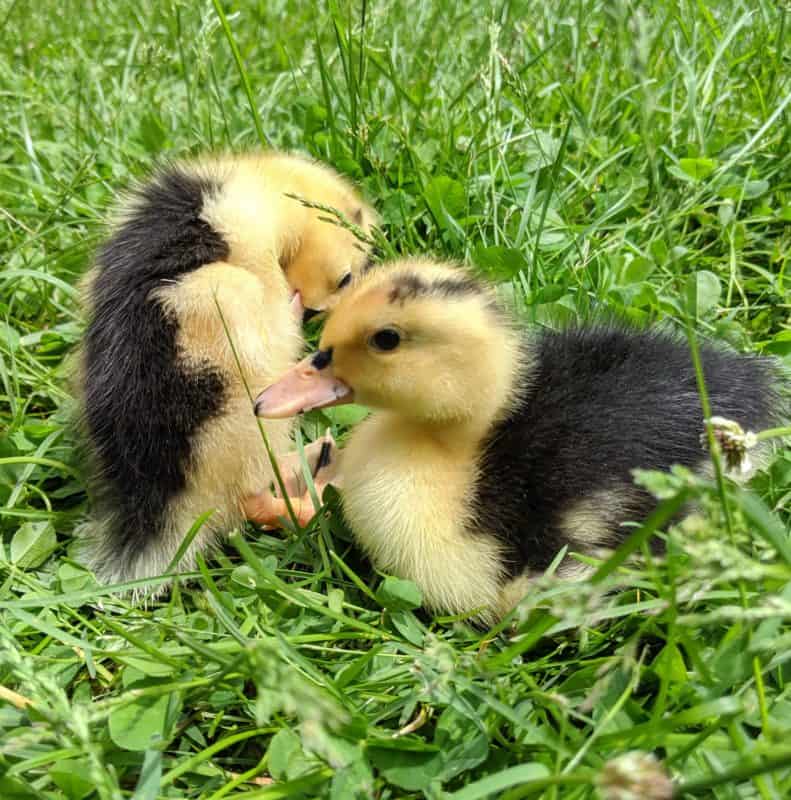
One interesting thing about Magpies is that their coloration patterns remain the exact same from hatch to adulthood. Many birds tend to change a decent bit when going from downy babies to fully feathered adults. This isn’t the case with Magpies, as the pattern you see on their own when they hatch is the pattern in which they will feather out.
Magpies were one of my first ever duck breeds, and they definitely make an excellent starter breed if you’re new to the world of duck keeping. For old and new duck keepers alike, this is an excellent breed for both meat and egg production. If you should choose to acquire Magpies, they should certainly thrive well on your homestead.
